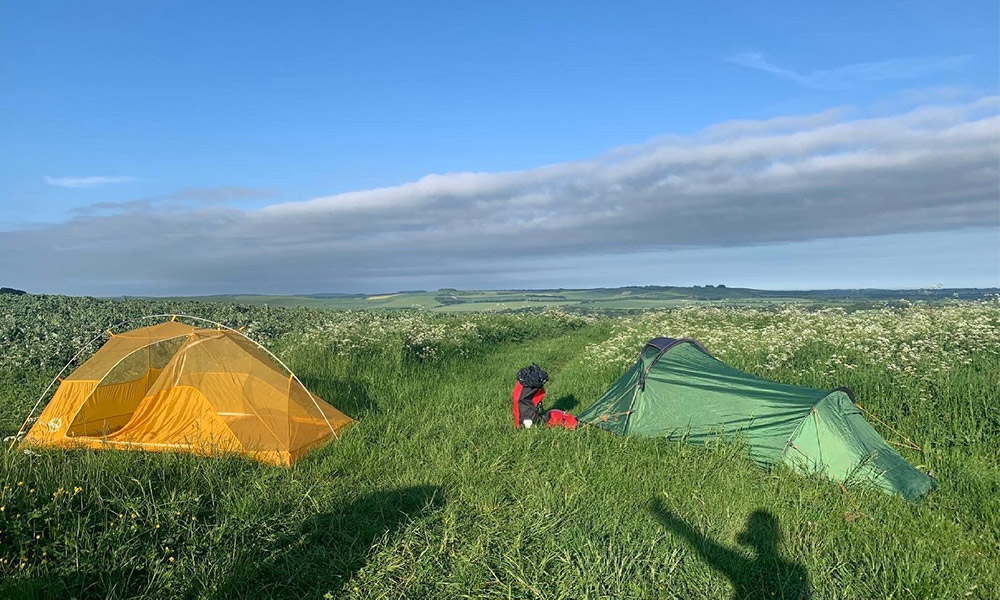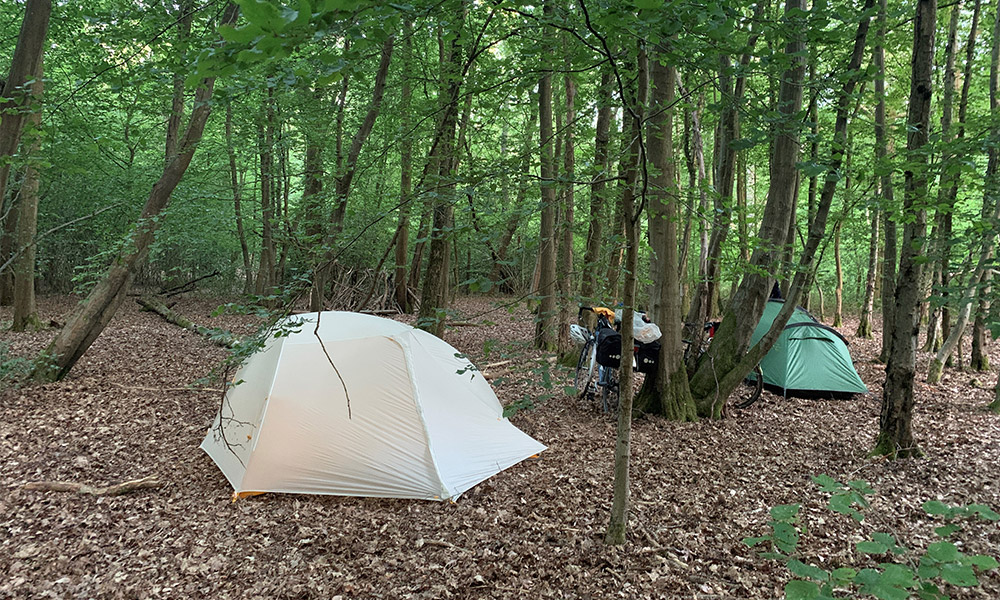A guide to sleeping out in the wild
It’s a fact (well, in my dictionary anyway!) that nothing beats getting outside and snuggling down under a blanket of stars for the night. Enter wild camping. Emma Frampton from the OS team gives us 5 top tips for finding the perfect wild camping spot.
You don’t need bucket-loads of time, money or have to travel far to wild camp.
The options for wild camping are endless – from cliff top views to lapping beach waves and forest canopies. But if you’re a wild camping virgin (or fairly new to the wild camping concept) then knowing how to choose a spot, can be helpful. So you feel better armed to get outside, and get exploring.
Below are my five steps to go through before heading out there.
1. Things to ask before you start
Before even starting the search for a spot, here are some questions that can be useful to ask yourself to help you hone in on what will make it a great night out.
Will you have a car, or are you relying on public transport?
- If you’re going via train or bus, you’ll need to pick a spot within a hour or so walk from the bus stop or train station (if you’re going over the weekend, rather than a mid-week wild camp, you’ll probably have more flex here as you’ll have more time to walk).
- If you’re going by car, your spot will be best if less than an hour from a car park, or street parking spot.
- And if you’re cycling – high five! What a genius idea!

Do you fancy a great hilltop view, or would you prefer to sleep in woods?
- If you fancy a hilltop view you’ll be looking at your map for ‘viewpoints’, places with the word ‘hill’ in their name and contour lines close together on the map.
- If you prefer a wooded area, you’ll be seeking out the mini pictures of trees on the map.
Is it likely to rain on the night you intend to go?
- If it is looking set to rain, and you don’t fancy sleeping out in the open – pick a spot close to a wooded area, so that you have the option to sleep under the tree canopy if the weather turns.
- Don’t let a drop of rain put you off – if you’ve the kit (whether a bivvy, tarp, tent) – you’re all set!
What time is sunset?
- Depending on the time of year, and the location you choose – it’s nice to be in wild camp ‘position’ an hour before the sun goes down.
- By ‘in position’, that you are sat with a picnic dinner at your feet and a glass of beer/lemonade/vino in your hand so plenty of time to enjoy the changing colours of the sky.
2. Choosing an area or theme
Once you’ve narrowed down the kind of spot you’re looking for, decide on a rough area of the country you’d like to explore, or something specific you’d like to see.
For example, you might fancy a camp out somewhere in the county of Buckinghamshire or alternatively, if it’s springtime, a camp out in one of the UK’s bluebell woods.
Once you have a rough area or theme – Google to your heart’s content.

Spots to try
’Best views in [insert county]’
‘Best walks in [insert county]’
‘Highest point in [insert county]’
‘Lakes/rivers in [insert county]’
‘Bluebell woods in [insert county]’
‘UK’s best bluebell woods’
3. Get map happy (also known as ‘mappy’!)
Once you have found an area you think you might like to explore, use the OS Map Sheet Finder to find which map you’ll need. Or, head over to OS Maps to view maps online.
Now you don’t need to be a wizard at map reading to be able to find a good wild camp spot, and you certainly don’t need to know how to find a grid reference or any of that technical stuff. However, maps do make it easier to find a suitable spot.

Here’s what to look for on an OS Map:
- Viewpoint/lookout symbols – these mark 180 degree or 360 degree views.
- Wooded areas – shown by little cartoon esque trees in green areas.
- Clearings – shown by white/blank spaces on the map, surrounded by green areas.
- Flat spots – areas without any ‘contour lines’ in them. When the contour lines are close together, that means it’s a steep slope.
- Trails – (marked in pink with dots, dashes and diamonds). The Ridgeway, the Cotswold Way, the North Downs Way. Where there’s a trail, follow it and you’ll find a great viewpoint or area to wild camp somewhere along it, guaranteed.
4. Navigation on the night
The world of navigation via phone has come on leaps and bounds in recent years.
So you can use your phone to help you navigate from your transport stop to the wild camping spot, as well as your map. Just plot your route in the OS Maps and save it, for easy access offline via the OS Maps app.

5. Most importantly of all
Know that there are no rights or wrongs when it comes to finding a wild camp spot.
It’s best to find somewhere far enough away from the surrounding suburbs so that you’re not going to be disturbed, but equally if you are happened upon by the odd dog walker – it’s no biggie (they’re likely to be pleasantly surprised by you and say good morning!).
Remember to leave no trace, take care of the great outdoors and follow the Countryside Code at all times.
Visit the Adventure Queens website to find out about upcoming campouts and join your local group, to head out wild camping with fellow wild women.





